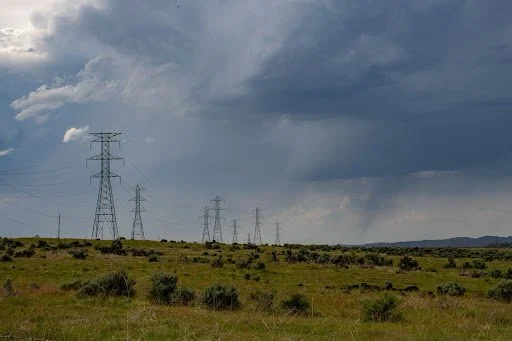by Rachel Cerato
In our last blog, we talked about resilience and the difference between energy and community resilience. And while this topic may seem overwhelming and sometimes frightening, we’re here to tell you that solutions already exist! Let’s talk about one of Climable’s favorite topics: microgrids. The definition of microgrids by the U.S. Department of Energy (DOE) is: “a group of interconnected loads and distributed energy resources within clearly defined electrical boundaries that acts as a single controllable entity with respect to the grid.” Wow, that’s too many words! Let’s simplify it.
When we think of power outages, it’s normally in reference to the regional grid. Energy is generated at power plants far away and transmitted to homes and buildings through power lines, transformers, etc. When a tree falls on a power line–maybe not even in your community!–it can impact your power at home. But think about this: what if energy was generated right at the building you live in? This is called local power generation. This is what microgrids are all about!
Visual showing the generation, transmission, and distribution of electricity on the regional grid. It’s important to note that all of these steps usually occur in different locations with significant distance between them. Image from U.S. Energy Information and Administration.
Instead of transmitting energy from far away sources, microgrids generate energy right where it’s used; in a clean energy microgrid, local power is often generated by solar panels. That means that the energy is coming from the sun shining directly on your home! When the sun isn’t shining, clean energy microgrids have batteries on site which are charged by the solar panels and can be used when the building needs it. (Side note: solar panels alone cannot provide power to a building during an outage, so the battery piece is KEY!) And just in case the battery ever runs out, microgrids often have a backup generator; the microgrids Climable work on use biofuel generators, the closest thing to a clean generator that’s still reliable!
This image shows how energy flows in a microgrid. While it is still connected to the regional grid, the buildings have a clean and reliable source of electricity thanks to local generation. Image from Climable's clean energy curricula. Find more here.
Well, you may say, that’s wonderful! Do we even have a need for the regional grid anymore? Unfortunately, we’re not there yet. Batteries and solar panels are great, but there are regulations around power lines and energy metering from public utilities and a lot of red tape. But have no fear, microgrids are still the best option! Even when buildings are still connected to the regional grid, the microgrid is smart and communicates with the grid to know when to save or release energy. This means that the renter or owner pays less, they’re using clean energy most of the time, energy is used more efficiently, and there is higher resilience! Talk about a win-win-win-win!
So, what do microgrids mean for resilience? Good question! Since microgrids have a local source of energy generation, buildings aren’t at risk of losing power from damage to the power lines either down the street or many miles away. If the regional grid goes down, there is still a power source that can be used for the most important energy necessities, like heating and cooling, refrigeration, and wifi.
Resilience is more important than ever. With increased climate emergencies happening and on the horizon, we must act now to protect the most vulnerable of our communities. Microgrids are one part of the puzzle, but only true equitable resilience will be achieved with systemic change. It’s up to us to fight for resilience on both the individual and systems level. How can we ensure that no one has to face the climate crisis unprepared and alone? Tune in to Part 3 to find out!




